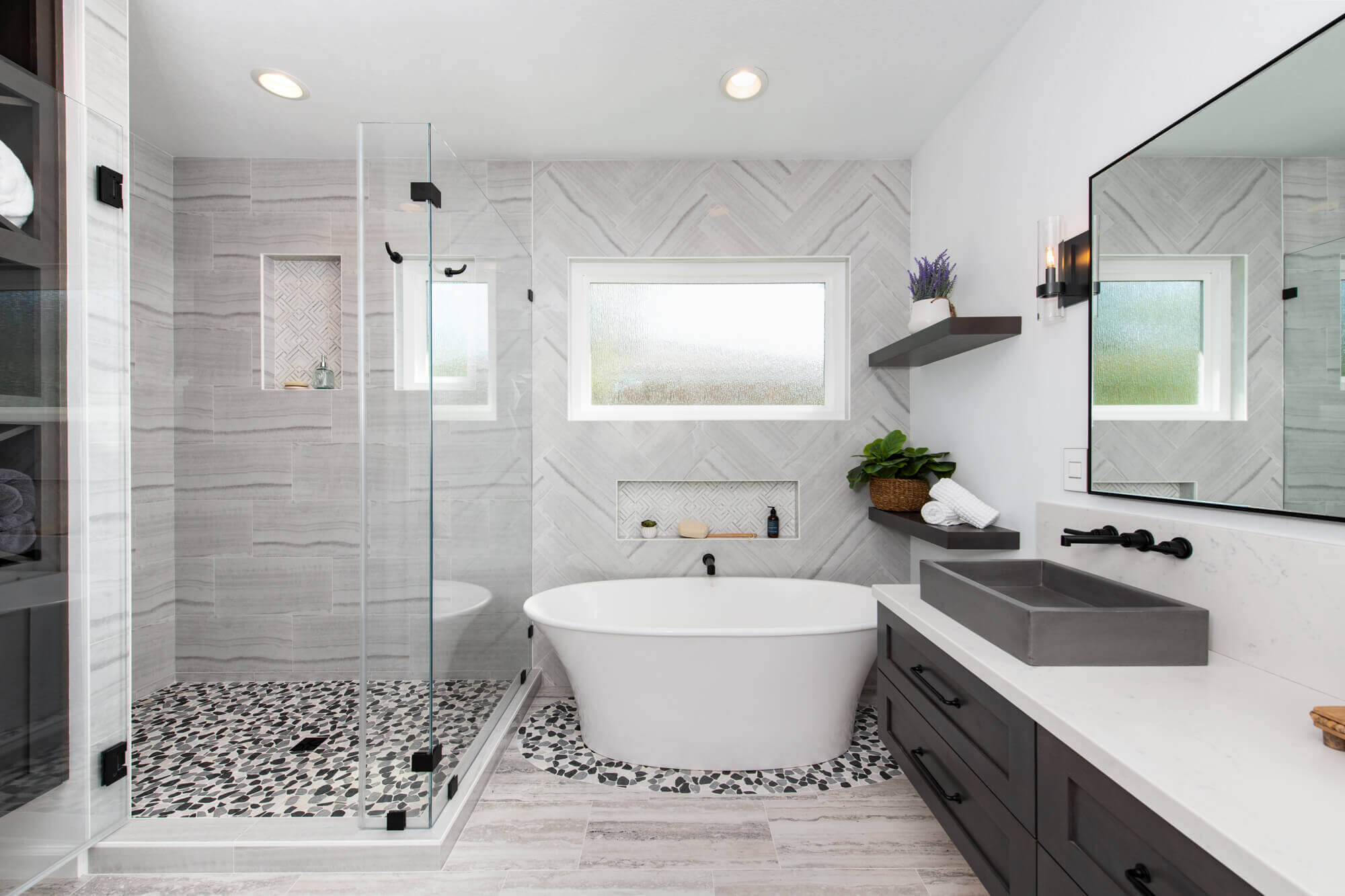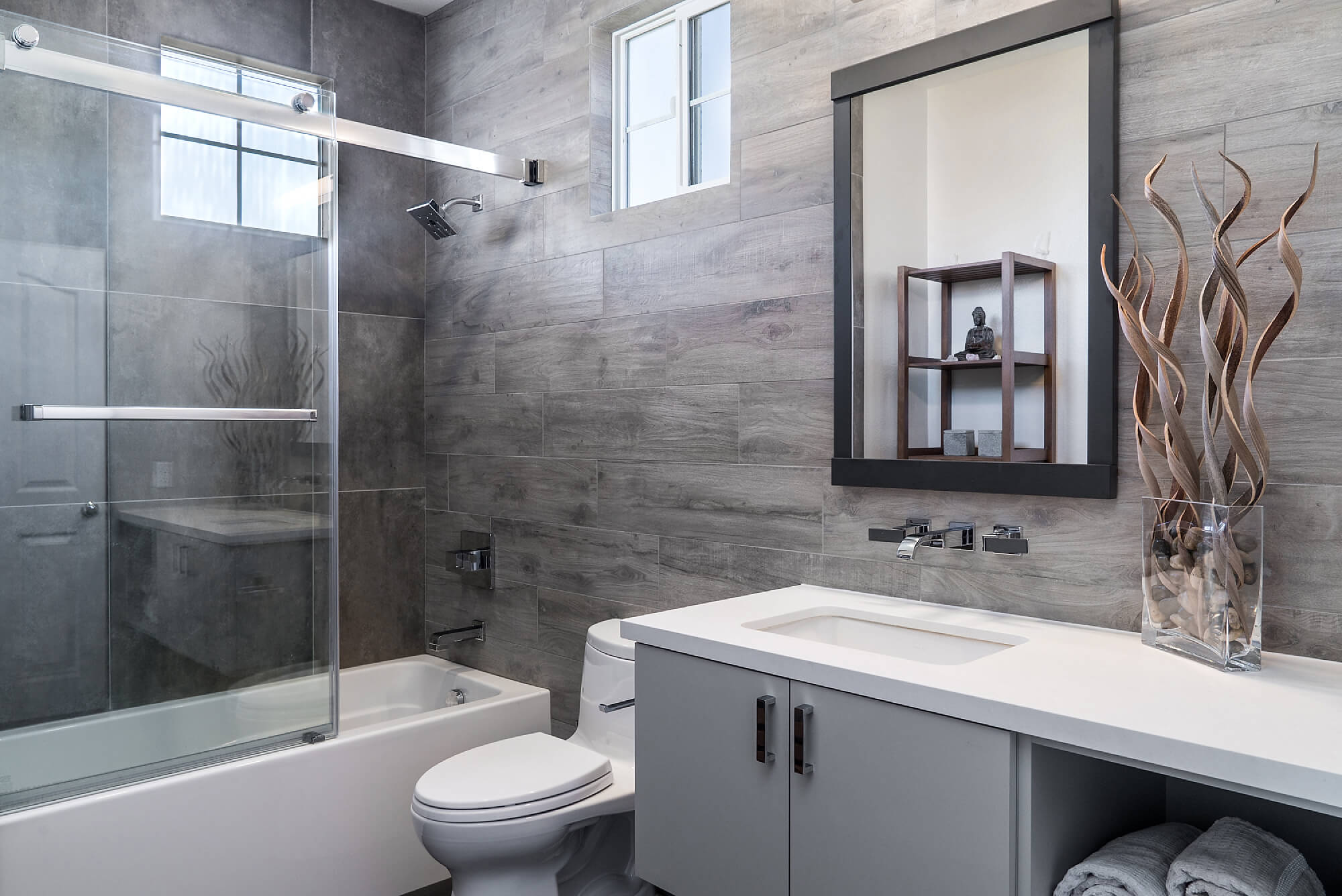Planning Your Small Bathroom Addition

Right, so you’ve decided to add a bathroom to your gaff, that’s mega! But before you start chucking bricks about, you need a solid plan, innit? This isn’t just about slapping some tiles on a wall, it’s about making sure your new bathroom is the bomb, and that you’re not left with a load of debt and a half-finished project.
Defining Purpose and Scope
Before you even think about buying a loo, you need to be clear about what you want this bathroom for. Is it a guest bathroom, a master en-suite, or just a quick pit stop? Once you know the purpose, you can figure out what you need in it. If it’s just for guests, you can probably get away with a smaller space. But if you want a full-on master bathroom with a jacuzzi and all the bells and whistles, you’ll need to plan for a bigger space.
Essential Considerations for Planning
- Budget: This is the biggest factor, mate. You need to be realistic about how much you can spend and stick to it. Get some quotes from builders and suppliers to get an idea of the costs. Don’t forget to factor in unexpected expenses, they always pop up!
- Space Limitations: You need to know exactly how much space you have to work with. Measure everything! Don’t forget to consider the existing structure and any potential structural changes.
- Plumbing and Electrical Requirements: You’ll need to make sure you have enough plumbing and electrical outlets for everything you want in your bathroom. Get a qualified electrician and plumber to give you an assessment, especially if you’re planning to install a shower or a bath.
- Desired Features: This is where you can get creative. Do you want a walk-in shower, a freestanding bath, a double sink? Make a list of all the features you want, and then prioritize them based on your budget and space.
Creating a Detailed Floor Plan, How to build a small bathroom addition
Once you’ve got a good grasp of the basics, it’s time to get into the nitty-gritty of planning. You’ll need to create a detailed floor plan of your bathroom addition. There are loads of online tools and software that can help you with this.
Maximizing Space Utilization
You can’t just chuck everything into a small bathroom and expect it to work. You need to be smart about how you use the space. Think about using corner shelves, floating vanities, and compact toilets. Don’t be afraid to get creative!
“Small bathroom, big ideas! It’s all about maximizing space and using every inch wisely.”
Design and Layout Considerations: How To Build A Small Bathroom Addition

A small bathroom addition can be a great way to add value to your home, but it’s important to carefully consider the design and layout to ensure that the space is both functional and aesthetically pleasing. With some planning and creativity, you can create a small bathroom that feels spacious and luxurious.
Layout Options
The layout of your bathroom addition will have a significant impact on its functionality and overall feel. Here are some popular layout options to consider:
- Corner Design: This layout is perfect for maximizing space in a small bathroom addition. The corner design allows you to fit all of the essential fixtures, such as a toilet, sink, and shower, into a compact space.
- Compact Layout: This layout is ideal for very small bathroom additions. It typically features a single-sink vanity, a compact toilet, and a small shower stall. You can maximize the space by using wall-mounted fixtures and mirrors.
- Maximizing Vertical Space: If you have limited floor space, consider maximizing vertical space. This can be achieved by using tall cabinets, a wall-mounted toilet, and a shower with a glass door.
Design Principles
- Color Schemes: Light colors, such as white, beige, and pale blue, can make a small bathroom feel larger. You can add pops of color with towels, rugs, and accessories.
- Lighting: Good lighting is essential in any bathroom, but it’s especially important in a small one. Use a combination of overhead lighting and task lighting to create a bright and welcoming space. Consider using recessed lighting, pendant lights, or vanity lights.
- Ventilation: Proper ventilation is crucial for preventing moisture buildup and mold growth. Ensure that your bathroom addition has a window or a vent fan to remove moisture.
Fixtures and Placement
- Toilet: Choose a compact toilet to save space. Consider a wall-mounted toilet to create a more open feel.
- Sink: A single-sink vanity is ideal for a small bathroom addition. Choose a vanity with a small footprint and plenty of storage space.
- Shower: A small shower stall with a glass door is a good option for a compact bathroom. You can also consider a walk-in shower to create a more spacious feel.
- Storage: Storage is essential in a small bathroom. Use wall-mounted shelves, cabinets, and baskets to keep your bathroom organized.
Construction and Installation
Now that you’ve got your plans sorted, it’s time to get down to the nitty-gritty – building your bathroom addition. This is where things get a bit more hands-on, so make sure you’ve got the right tools and a mate to help out. We’ll go through each step in detail, starting with the foundation.
Foundation Construction
A solid foundation is crucial for your bathroom addition. It’ll provide a stable base for the structure and prevent any unwanted movement or settling.
Here’s a step-by-step guide to building the foundation:
- Excavate the area: Dig a trench to the depth specified in your plans. The trench should be wide enough to accommodate the foundation walls and any necessary footings.
- Pour the foundation: Once the trench is ready, pour concrete into it. Make sure the concrete is level and compacted properly. You might want to use a vibrating plate to help with compaction.
- Install the foundation walls: After the concrete has cured, you can install the foundation walls. These are typically made of concrete blocks or poured concrete. Make sure they are properly anchored to the foundation and plumb.
Framing the Bathroom Addition
Framing is the skeleton of your bathroom addition. It provides support for the walls, roof, and other structural elements.
- Install the sill plate: This is a horizontal beam that sits on top of the foundation walls. It provides a base for the walls to be built upon. Make sure the sill plate is level and securely fastened to the foundation walls.
- Erect the wall studs: These are vertical beams that make up the walls. They are typically spaced 16 inches apart. Make sure the studs are plumb and securely fastened to the sill plate and top plate.
- Install the roof rafters: If your addition has a roof, you’ll need to install rafters to support it. These are angled beams that span the width of the addition. Make sure the rafters are properly spaced and securely fastened to the wall plates.
- Add the sheathing: This is a layer of plywood or OSB that is attached to the exterior of the framing. It provides a smooth surface for the siding or exterior cladding to be installed on.
Plumbing Installation
Getting the plumbing right is essential for a functional bathroom. You need to consider water supply, drainage, and ventilation.
- Water supply: You’ll need to connect your bathroom addition to the main water supply line. This will involve running a new pipe from the main line to the bathroom. You might need to install a shut-off valve to isolate the bathroom’s water supply.
- Drainage: You’ll also need to install drainage pipes to carry wastewater away from the bathroom. This will involve connecting the bathroom fixtures (sink, toilet, shower) to the main sewer line. Make sure the pipes are properly sloped to ensure that wastewater flows freely.
- Ventilation: Proper ventilation is crucial to prevent moisture build-up in the bathroom. This usually involves installing a vent fan that exhausts moisture to the outside. Make sure the vent fan is properly sized and installed according to local building codes.
Electrical Installation
You’ll need to install electrical outlets, lights, and a fan in your bathroom.
- Electrical wiring: You’ll need to run electrical wiring from the main electrical panel to the bathroom. Make sure the wiring is properly installed and protected by conduit or cable.
- Electrical outlets: You’ll need to install electrical outlets for your bathroom fixtures and appliances. Make sure the outlets are GFCI protected (ground fault circuit interrupter) for safety.
- Lighting: You’ll need to install lighting fixtures for your bathroom. Make sure the fixtures are properly rated for bathroom use. You might need to install a separate circuit for the bathroom lighting.
- Fan: Install a bathroom fan to help exhaust moisture from the bathroom. Make sure the fan is properly vented to the outside.
Installing the Walls, Ceiling, and Flooring
This is where your bathroom starts to take shape.
- Installing the walls: You can use drywall or moisture-resistant panels for your bathroom walls. Make sure the walls are properly insulated and finished with a moisture-resistant paint or sealant.
- Installing the ceiling: The ceiling can also be constructed from drywall or moisture-resistant panels. Consider using a vapor barrier to prevent moisture from entering the attic space.
- Installing the flooring: You have lots of options for bathroom flooring. Some popular choices include tile, vinyl, and laminate. Make sure the flooring is properly installed and sealed to prevent moisture damage.
